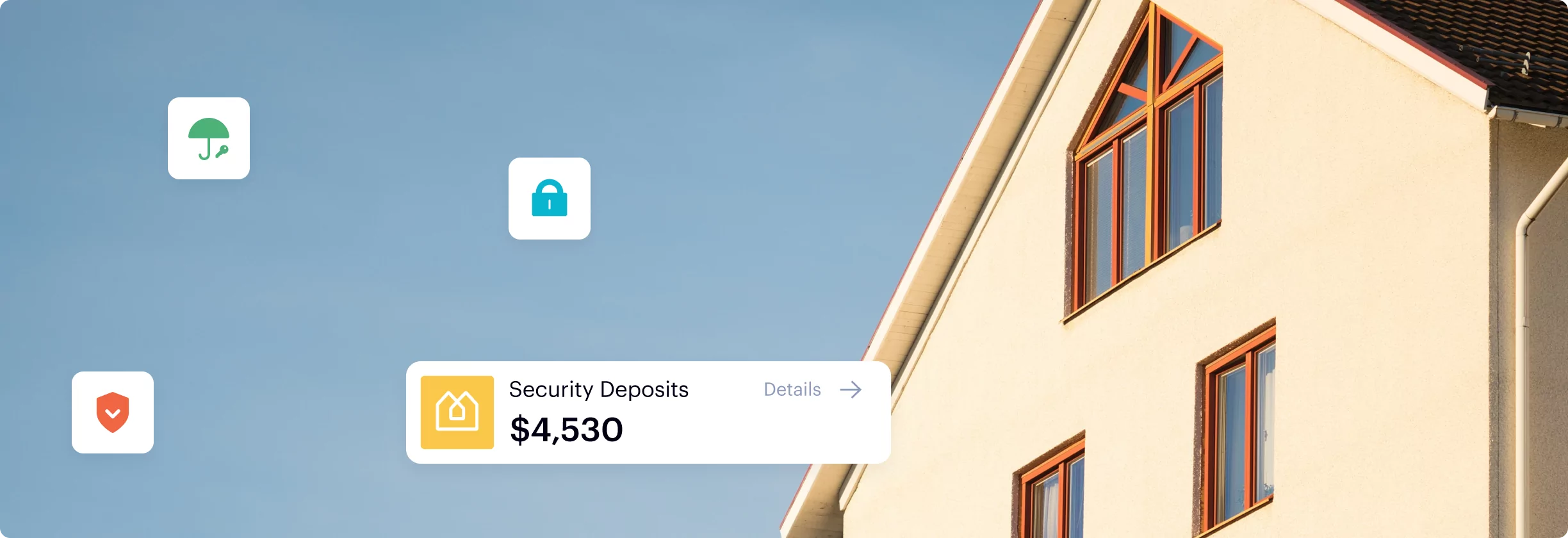Extra money in your pocket is never a bad thing, and renting a room in your house is one of the ways you can earn additional income.
However, before you start marketing your spare bedroom, you’ll need to understand the basics of becoming a legal landlord at your property.
In this guide, Baselane will walk you through the steps of how to rent a room in your house.
Automated and free Rent Collection, without the stress
A Guide Renting a Room in Your House and Finding the Right Tenant
From following local, federal, and state laws to managing lease agreements, making sure you have a trustworthy renter can be an uphill battle.
However, with these simple steps, you can attract the right tenants and be on your way to earning rental income.
1. Know Your Local Laws
You should first and foremost be aware of the legal distinction between renting a room in your house and being a tenant. You are considered a landlord if you rent out a room in a house you own.
As a landlord, you might be required to purchase landlord insurance on top of your homeowner’s insurance. If you are a tenant, renting out a spare room is called subletting.
Each state, and certain cities within states, have their own rules regarding subletting. For example, in New York City, a lease agreement cannot restrict subletting, as it can in Georgia.
Second, you should become familiar with landlord-tenant laws and regulations in your state. Some states, such as Washington, require landlords to have a rental license and pass a home inspection before a tenant can move in. In other cases, there might be conditions rather than restrictions. For example, it might be a requirement that a renter has independent access to the rental space.
Next, double-check your local laws. Don’t forget that long-term leasing isn’t your only option. Airbnb makes it possible to rent rooms to short-term guests as well.
Although, short-term rentals have their own set of restrictions in a few cities. In New York, when you rent out a room or a portion of a home for less than 30 days, the city requires the owner to be on site.
Check through the following laws to make sure you comply with the appropriate regulations:
- Local laws
- City ordinances
- Zoning laws
- State laws
- Homeowners Association laws (if applicable)
Some federal laws to be familiar with include:
- Uniform Residential Landlord-Tenant Act
- Fair Housing Act
- Fair Credit Reporting Act
2. Prepare the Space
The room you are renting out must be habitable. In other words, it needs to be fit to live in and comply with health and building codes.
Making the space habitable is your responsibility as a landlord, and the following things should be added to your checklist before renting a room in your house:
- Privacy: Secure your valuables and install deadbolts on each bedroom door to provide privacy and security for your renter.
- Maintenance: Fix and maintain anything that needs repair, including appliances, stair railings, fixtures, walls, and flooring.
- Empty the room: Remove all personal items, decorations, and furnishings (unless you plan to rent a furnished room).
- Sanitation: Clean the walls, ceilings, baseboards, carpet, flooring, light fixtures, and switches.
Many people looking to rent a room want one that is furnished. If you decide to provide furnishings with the room, make sure you take a careful inventory with images and have your tenant sign the list.
Before they move in, do a quick walk-through inspection with them. You’ll also want to choose furnishings that are clean and in good condition. Leave your tenants plenty of space by selecting options that fit the room well.
3. Advertise on Rental Websites
Now that you’ve prepped the space, it’s time to list your rental. Consider advertising on popular rental websites like HotPads or Zillow, and don’t underestimate the power of showcasing your rental on social media.
With 72% of American adults using social media, this can work to your advantage to highlight your unit. Think of your listing as an online dating profile but for a new housemate instead of a new soulmate. You want to put your best self, or in this case, best space, forward. Just like in the world of dating, you’ll need to craft an eye-catching ad, so you’re not being scrolled past.
We recommend including:
- High-quality images
- Property description
- List of amenities
- Shared spaces
- Rental price
- Room size
- Parking
- Access to public transit
- Pets and smoking policies
Automated and free Rent Collection, without the stress
4. Screen Potential Tenants
Landlords need tenants, and tenants need landlords, but finding each other can sometimes be challenging.
Screening your potential tenants can be a great way to find your perfect match. A solid application form should ask for all the necessary information to vet the applicant, including:
- Credit Score: A score over 630 is considered “fair,” over 690 is “good,” and over 720 is “excellent.”
- Credit History: Review details on the applicant’s loans and lines of credit, including credit limits and payment history.
- Employment History: Check your potential renter’s current and past employment and note how long they stay in jobs and how much they make.
- Background Check: Verify the tenant’s identity and criminal history. The Fair Housing Act outlines the rules for denying a tenant with a criminal record.
- Check References: Call the tenant’s previous landlord to ask how long the tenant lived in the rental property, if they paid rent on time, if they treated the property with care, and how much notice did the tenant give before moving out.
To simplify the process, consider using a tenant screening service like the one offered by Baselane. Everything is online and you receive the report in minutes.
5. Signing the Lease Agreement
When you’re sharing common areas, a lease agreement for a rental in a private home is a must. This way, you’re specifying what is expected of a tenant and your responsibilities as a landlord. Put everything in writing and have both parties sign it. You’ll want to include general lease agreement requirements such as:
- Lease term
- Rent amount
- Rent collection methods and dates
- Late rent fees and penalties
- Eviction clauses
- Amenities and utilities included
- Recycling and garbage collections
- Any policies or restrictions
In addition to general requirements, you’ll also want to include the following details in your lease agreement:
- Define common areas: Unless you have an entire rental suite, your tenant will generally need access to shared spaces like the kitchen, bathroom, and laundry. A lease that clearly outlines the rules about common areas will save you both conflict down the road.
- House rules: Outline all your expectations in the lease agreement, including noise, overnight guests, and pets. Make sure your tenant gets a copy so you can refer to them as needed.
Collect a security deposit: In a rental agreement, the security deposit can help protect you financially should your renter suddenly leave without paying rent or causing property damage. Online rent collection from Baselane can be an efficient way to collect security deposits and rent payments.
How to Evict Someone Renting a Room in Your House
In most states, tenants renting a room do not have the same legal and privacy rights as tenants renting a property. Fortunately, it makes it easier for owner-occupiers to remove unwanted guests from their property.
To evict someone renting a room in your house, you will not be required to go through the same eviction process as a typical landlord or property manager.
Even though each state has its laws and regulations for this exact process, typically you will have to provide a notice in writing to your unwanted tenant called a “notice to vacate.”
You must state the date the tenant needs to leave, and the notice period cannot be shorter than the payment period your renter needs to leave by.
Final Thoughts: Is Renting a Room in Your House Right for You?
Renting out a room can be a great way to offset the cost of homeownership with either long-term or short-term renters. You’ll be able to use your additional income to pay off your mortgage faster, travel more, or pad your emergency fund.
Some of the risks of living with another adult are obvious, like noise or conflicts over bathroom time. But there are also the not-so-obvious things—like assuming total financial liability for the lease, property damage, theft, or even evicting your tenant. Using a split rent payments app can help reduce financial risk by ensuring each roommate pays their share directly.
If you aim to manage risk with the steps provided, most situations won’t turn sour and can save you in the long run.
FAQs
In most areas, you can rent out multiple rooms in a single-family home if you live there. However, there are limits to the number of families that can occupy a home. You will need to check your local laws to be sure.
Yes. Rental income made from a room rental in your home still needs to be reported as income. The good news is, as a landlord you can qualify for some tax benefits that will help offset your taxable income against expenses for mortgage payments, utilities, repairs, and more.
If you treat renting out a room like a business, most of the horror stories you hear from landlords can be avoided. Lease agreements, inspections, maintenance, as well as landlord and tenant laws will standardize the process and protect your rights.
When you take the time to do it right, renting out a room in your house can be a great experience with little risk and lots of rewards.







